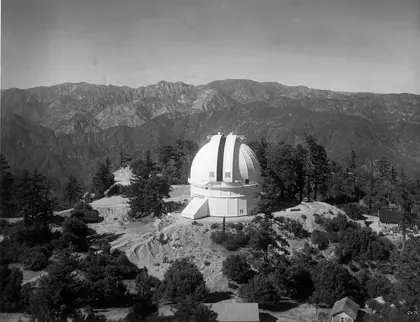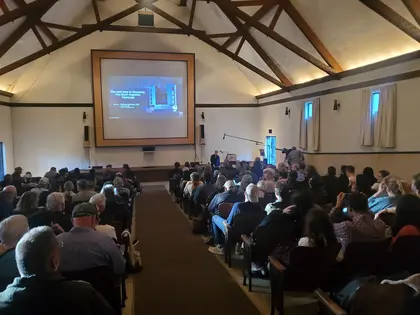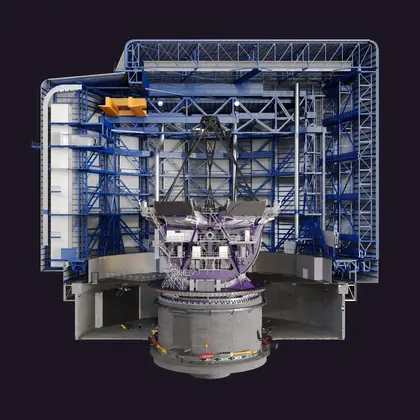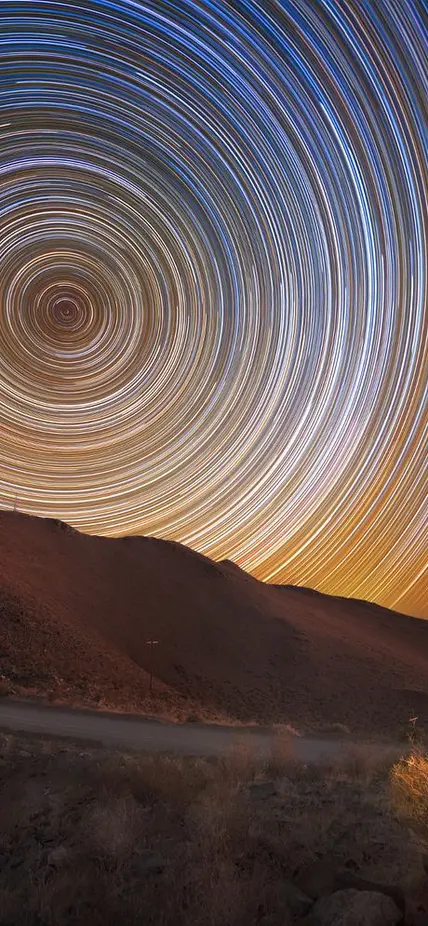Pasadena, CA—The past, present, and future of Carnegie astronomy came together last Saturday night as Carnegie astronomer Rebecca Bernstein told the story of the Giant Magellan Telescope to a packed auditorium at Mount Wilson Observatory.

Bernstein, who is also the Giant Magellan project’s Chief Scientist, told an enthusiastic crowd about how the telescope—which is under construction at Carnegie’s Las Campanas Observatory in Chile—will enable breakthroughs in understanding the physics governing the universe, the formation and evolution of cosmic ecosystems, and the habitability of distant planets.
The Giant Magellan will get its viewing power from seven 8.4-meter mirrors arranged like petals on a flower to provide a light-collecting area that's equivalent to a single mirror with a diameter of 25.4 meters. This larger collecting area will allow the Giant Magellan to produce higher-resolution images, enabling scientists to observe the cosmos in greater detail than ever before.
“Each leap in telescope diameter represents a leap in our ability to collect light and a leap in our ability to understand the universe,” Bernstein said, showing attendees how advances in telescopes through history revealed new information about our cosmic surroundings from our Solar System to our galaxy to the universe.
In fact, the discovery that the universe exists beyond our own Milky Way happened on the 100-inch Hooker telescope at Mount Wilson 100 years ago next week.
Carnegie astronomer Edwin Hubble was able to settle a long-standing debate in the scientific community when he discovered a very special kind of pulsing star, called a Cepheid variable, in a blotchy patch on the sky that astronomers at the time were calling “spiral nebulae.” We now know that these blurry blobs are distant galaxies, but at the time it was thought that they could be star-forming regions within the Milky Way.

When Hubble found this star—which brightens and dims on a fixed schedule—he knew he’d be able to use the regularity of its variations to measure its distance from Earth. This was thanks to mathematical relationship determined by Harvard University “human computer” Henrietta Swan Leavitt, which is still used by astronomers today.
By measuring the distance to this variable star, Hubble was able to demonstrate that it existed far beyond the boundaries of our own galaxy, confirming the existence of the broader universe and revealing that there were many more incredible celestial phenomena out there to discover.
Hubble’s discovery put Carnegie at the center of the astronomical community for the entire 20th century. Now, with the Giant Magellan Telescope being built at our observatory in Chile, we can maintain our leadership position for another 100 years.

During her presentation, Bernstein explained that the Giant Magellan will enable a new understanding of the earliest galaxies. For 30 years, the Hubble Space Telescope sent back stunning images of space and allowed us to see deeper than we ever had before. Now, the JWST is upending that knowledge, showing—for example—that spiral galaxies emerged much sooner after the Big Bang than previously thought.
Once online, the Giant Magellan will be 10 times sharper than the Hubble Space Telescope and have four times the resolution of JWST, giving astronomers the power to look back in time and solve cosmic mysteries like this one.
Exoplanets are another hot research area that will be advanced by the Giant Magellan, particularly the search for habitable worlds and life elsewhere.
The history of the initial conditions for life have been erased by geologic processes on Earth, Bernstein explained, adding: “the only way we will know about them is by studying distant worlds.”

Three decades ago, we didn’t know about any planets beyond our Solar System. Now, we’ve found 5,000 of them and there are estimated to be 40 billion in our galaxy alone. But our existing technology only helps us find young planets that are still radiating heat from their formations. To find an older, cooler planet like Earth out there, we need new tools.
Bernstein walked the crowd through the ways that the suite of instruments being developed for the Giant Magellan will advance our ability to look for signs of life—including oxygen—in the atmospheres of other worlds.
By spreading the word about the Giant Magellan’s breakthrough capabilities, Bernstein said she hopes to excite space-lovers of all ages about the project and to inspire the next generation of astronomers.
“Astronomy has the power to captivate people all around the world and this discovery and awe brings people together,” she said.
